As car enthusiasts, we are often asked by non-enthusiast friends and relatives what car we would buy. Personally, in the past I often recommended Toyotas or Hondas, but these days the answer is almost always Mazda. It’s not because Mazda routinely tops rankings for safety, reliability, or fuel economy and low emissions, although it does all of those things. It’s not because Mazdas are beautifully designed, even though they are. It all boils down to the one thing that sets Mazdas apart from nearly every other marque right now: the way they drive.
The latest generation of Mazdas have consistently ranked as some of the best-handling cars on the road. Everyone knows the Miata is as close to pure driving bliss as one can get in 2019. But even crossovers like the all-new CX-30 are imbued with dynamics that embarrass everything else in its class, and even some rival automakers’ sedans.
It’s astounding, really. We recently drove the CX-30 on small mountain roads from San Diego to Palm Desert, on the kind of winding two-lanes southern California is known for. Packed with undulating bends and switchbacks, it was the kind of drive more suited to an AE86 or WRX. Yet here we were, coddled in the leather-laden cabin of a five-door wagon pointlessly raised up to look the part of an SUV, just flinging around corners like we were in an Miata.
How does it do that? According to Mazda’s engineers, it starts at the top. At every level of the company, decisions are governed by the philosophies of hashiru yorokobi (joy from driving) and jinba ittai (horse and rider as one). Now, many companies claim to imbue their products with a “fun to drive” attitude, but for the most part it’s empty marketing, words conjured by ad agencies after the product is already made.
Mazda, on the other hand, devotes actual yen and manpower to fulfilling that promise. Take, for example, their extensive research into what they call human-centric engineering. Before driving the CX-30, Mazda gave us an in-depth look at this development process.
This technique begins with studying how the human body moves, how you reflexively balances your head on your neck, and how your pelvis shifts as you walk. Mazda then strives to make the entire car move as if it were an extension of your lower body, transmitting signals of motion through the seat, mimicking the way your pelvis interfaces between your legs and your torso.
Perhaps the best example of this is the way Mazda has completely re-engineered the front suspension. In the old way of doing things when a car hits a speed bump, a hard tire (“performance” tires are getting ever harder) strikes the bump and the strut gets pushed back towards the rear of the car. If you imagine the car going from left to right, as the wheel rolls over the bump, the control arm bushings deflect rearward and rotate, and the wheel travels in kind of a C-shaped trajectory if you were to trace the letter backwards from the lower point to the upper point. Back, up then forward into default position.
All this happens in a split second, but the upshot is that the driver’s head gets jerked backwards, then up and down as the body instinctively struggles to maintain balance against several new forces in rapid succession.
Mazda redesigned the suspension geometry, developed a new type of ball-shaped bushing, and equipped the CX-30 with a softer sidewall tire all to simplify the wheel’s motion when it strikes the bump. Now, the wheel simply travels along one axis.
By simplifying the suspension motions, steering improves steering and roll is reduced. Not only that, but when video of test subjects going over the same bump with the two suspensions is shown side by side, it’s clear the new design results in far less subconscious head bobbing. It minimizes the forces acting against the driver, giving one a greater sense of balance, making one’s movements more natural feeling, and providing the sensation that the car is an extension of one’s body.
Much noise was made about the fact that Mazda has been transitioning to torsion bar rear suspensions. Many presumed it was a backwards move for the sake of cost-cutting, but according to the engineers, the goal was once again to simplify the forces acting on the car and, subsequently, the driver. The change clearly didn’t affect handling in this case.
The brakes are another example. In typical performance cars, brakes that are considered “good” are very grabby initially, so that you feel the negative g forces yanking you down from high speed.
Anyone’s that’s tried left-foot braking knows how difficult it can be to modulate the pedal. That’s because you’re primarily using your weaker shin muscles to lift your leg above the pedal, and this is true whether you’re using your left or right leg. So, Mazda designed the brake pedal to be high effort with a short stroke, forcing the use of the stronger calf muscles to modulate the pedal. It can feel strange at first, but once you get used to it you wonder why all brakes aren’t like this.
At the highest levels of performance, supercars use tons of tech like active dampening to deliver superior driving feel. Mazda, on the other hand, rethinks clever solutions to do the same. One exception, though, is the very clever G-Vectoring Plus system, which comes standard on all CX-30s.
The software uses steering input and load sensors at each wheel to sense if the car is about to enter a curve. At turn-in, it momentarily cuts engine torque to shift the weight to the front wheels, in much the same way a rally driver would do. The result is an ever-so-slight increase in grip. Then, during the turn, the system drags the inside rear brake to help stabilize the handling. The system is remarkably intuitive, resulting in a preternatural ability to sling through corners without minor steering corrections.
Inside the cabin, the thoughtful design continues. One of the things we love about driving older cars is that every button has a place and purpose. You can control everything by feel without taking your eyes off the road. Mazda believes in this too, and is thankfully moving far, far away from the touchscreens that plague modern car interiors. In fact, their insistence on not having touchscreens is one of the reasons Apple CarPlay and Android Auto — which required one initially — were so late to appear on Mazda cars.
Mazda’s research revealed that it’s impossible to operate a touchscreen without taking your eyes off the road. Its solution, a dial and button system cycles through menus for functions like navigation, audio, and connected devices, is a god-send. What’s more, Mazda has purposefully placed the screen further up the dash for a couple of good reasons. First, its just out of arm’s reach, discouraging the tendency to push on the screen that drivers have been conditioned to over the past 10 years. Second, it reduces significantly the glance angle and the time it takes your eyes to refocus when your gaze goes from screen to road.
Beyond that, there are attentive details that make the system a joy to use. Pushing the volume knob mutes the stereo, but if you’re playing a podcast the same action merely pauses. As late as 2018, many Mazdas had buttons with different detent resistances or backlighting in slightly varying shades. In the latest generation of cars that includes the 2019 Mazda 3 and CX-30, Mazda unified its suppliers to ensure that every button, every dial, every lever, moves with the same click, the same feel, and every light emits the same white hue.
On top of all that, the cabin is incredibly beautiful for a mainstream marque, with minimalist controls that are intuitive as they are pleasing to the eye. On top trim levels, the sumptuousness equals or exceeds that of actual luxury brands.
There are countless other instances in which human-centric engineering has completely overhauled the old way of doing things. Every aspect of the CX-30 has benefited from this philosophy, and the attention to detail is simply superb. These changes might seem subtle and minor, but when combined they curtail fatigue and distraction, and focus the driver’s on the task of actual driving.
Are there negatives to the CX-30? Well, sure. On an otherwise sleek design, the plastic side molding looks thick and bulky. All instruments, including the speedometer and tach, are now digital.
In the Mazda 3 on which the CX-30 is based, the 2.5-liter SkyActiv-G four-cylinder’s 186 horsepower and 186 lb-ft of torque feel peppy, but the CX-30 weighs about 200 pounds more. Combined with a higher center of gravity and a throttle response that feels a little de-tuned in the otherwise fantastic Sport mode, it’s a tiny bit less lively than the 3.
These are nits, though, and none would prevent me from recommending the CX-30. Starting at $21,900 for a front-drive model and topping out at $29,600 for an optioned-out AWD, you get a lot for the money. How many cubic feet of cargo space does it have? Enough. Does it get decent gas mileage? Sure. You could get a CX-5 or a Mazda 3 hatchback if those things are important to you. The CX-30 might not win on every metric, but it on the ones that count — a stellar driving experience — Mazda really has no competition.
After all, we’re not all going to be piloting our peripheral-ported RX-7s on the daily. Now, when spouses or family needs demand a more practical car, you won’t have to give up your soul. Just be sure that when you go for a test drive, you insist on taking it over some curvy roads, or a few cloverleaf on-ramps at the very least.



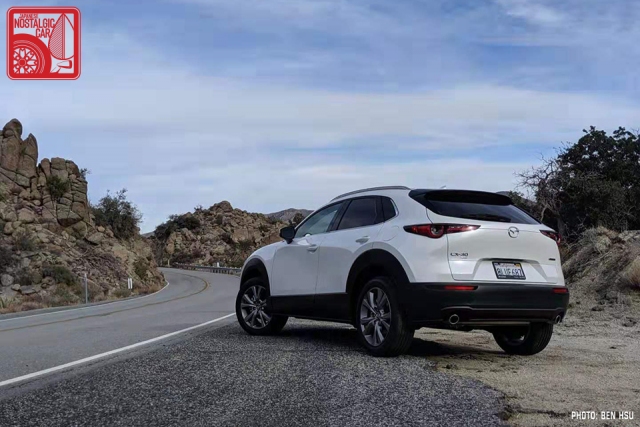
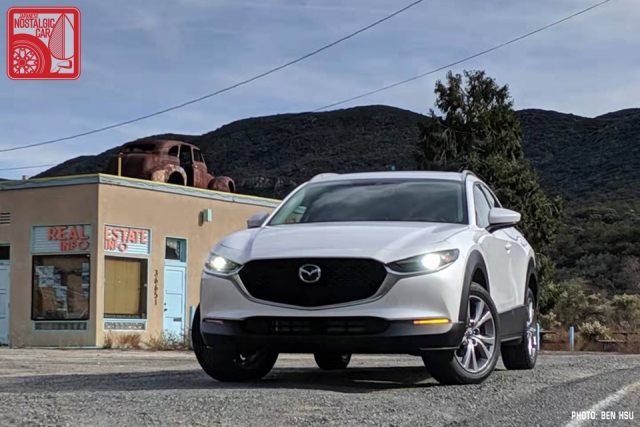

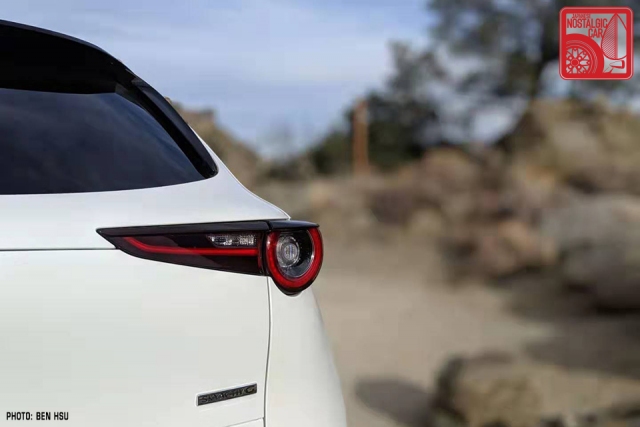
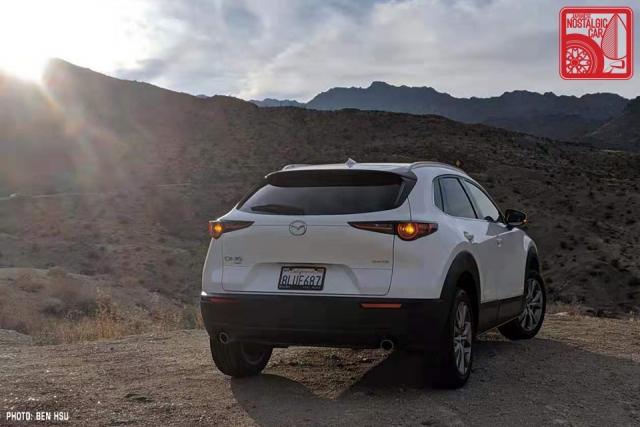
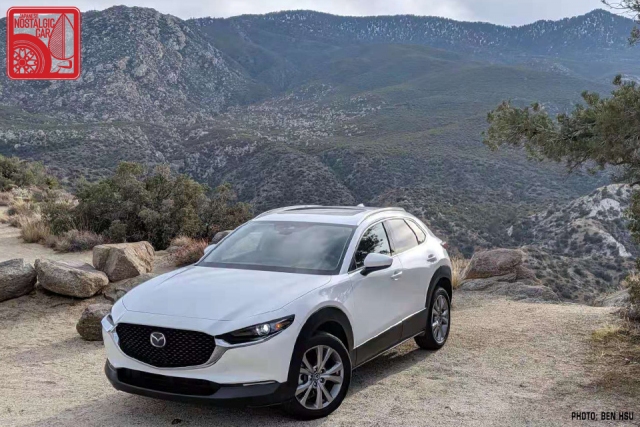
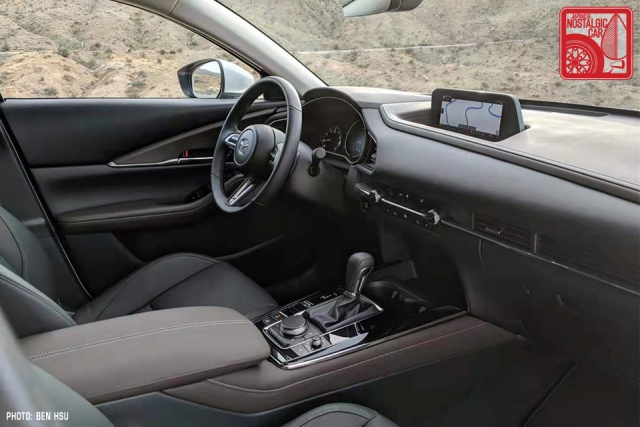
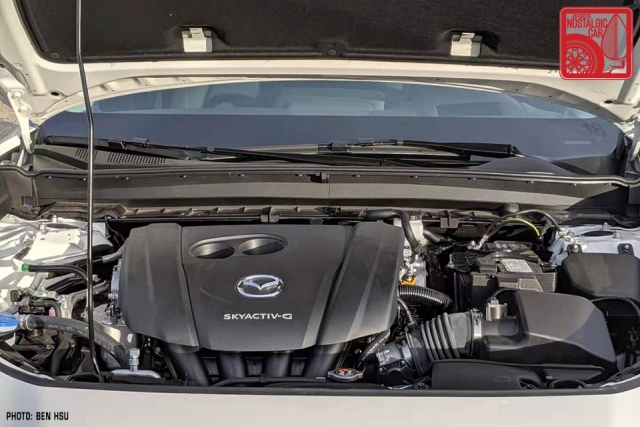

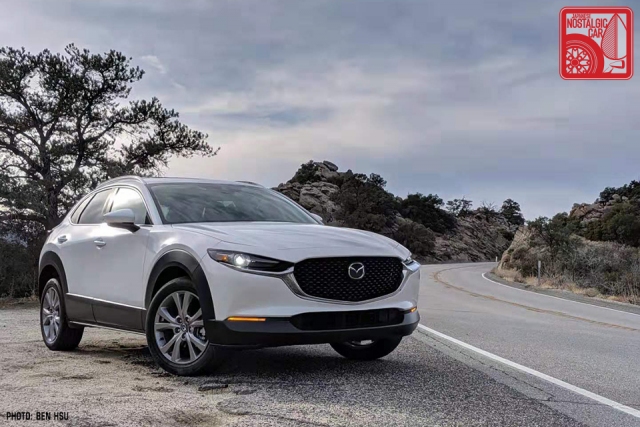




And yet the new Mazda 3, which is a car I was very interested in, is being panned in the motoring press for it loss of “enthusiast” values and diminished handling and fun to drive feel compared to it’s previous model.
Who to believe?
Who’s saying that? I’m not trying to sound combative. I’m genuinely curious. I’ve driven the sedan, hatch, AWD, FWD, AT, and MT versions, and found it to be fantastic.
The main thing is disliked was the MT’s clutch feel and for the first time in my life I actually preferred the automatic. I could see someone saying that its softness made it (slightly) less sporty but that’s it. Driving dynamics are second to none.
For some reason I seemed to remember folks panning the new generation’s handling relative the one that preceded it. When I did a search, most said the switch the the torsion bar wasn’t a huge step back. I think a couple reviews were more harsh in their assessments.
Motortrend panned the driving experience specifically: https://www.motortrend.com/cars/mazda/mazda3/2020/2020-mazda3-pros-and-cons-review/
Consumer Reports thinks the handling are a downgrade from the previous gen: https://www.consumerreports.org/compact-cars/2019-mazda3-first-drive-review/
I liked my Mazda3 but ultimately swapped it out bc everyone else in my family didn’t like being in it. Maybe some day I’ll save up for a gently used MX-5….
The proliferation of those torsion beam axles is the worst thing to happen to the industry in the 21st century. We should be waaaaaay beyond those now…along with drum brakes (Honda Fit, I’m looking at you)!
They pass those things off because the general public is ignorant to their existence. Turn your head on the bean counters and they’ll pull anything.
In my experience, the torsion beam-equipped vehicles will adequately do what’s expected of them in “optimal” conditions, but fall apart in just the areas where a more refined suspension wouldn’t.
Transitory maneuvers, bumps and comfort under load tend to be problematic. The more people/weight in the vehicle and shorter wheelbase models exacerbate the issues.
It’s hard to believe entry-level cars sold 20-30 years ago were better overall values…not to mention, better equipped. Ignorance is, indeed, bliss.
The Consumer Reports headline reads:
“Redesigned 2019 Mazda3 Stands Out From the Crowd”
Car and Driver:
The 2019 Mazda 3 Shows a Porsche-Like Obsession with the Details
CNET:
Still sporty, but much more complete
Automobile Magazine:
The 2019 Mazda 3 Advances the Compact-Car Art
Beautiful Styling, Fantastic Interior, AWD option and stellar reliability ratings (rated #2 behind Lexus this year) there is a lot to like here.
You guys are not going to believe this. I’ve had extended debates with a Motor Trend writer about the Mazda3. I couldn’t understand how we had such disparate opinions about the way the car drove.
Well, he just messaged me to say that the car they tested was broken — as in, a prototype assembled with the wrong parts. He test drove a different 3 and was absolutely wowed by the handling. I won’t steal any more thunder from Motor Trend follow-up, but I would expect a very different article from them soon.
Well, far be it from me to argue with the illustrious and omnipotent automotive press.
That said, are they comparing these Mazdas against similarly-equipped vehicles? It’s still possible to be crowned with the title of “World’s Greatest Hamburger”…and still have a mediocre meal.
Of course, it’s worth noting that anyone (myself included) suggesting Mazda could do better (whether the current model is adequate or not) is essentially arguing the hypothetical.
Is it an argument worth making? I suppose sales and owner satisfaction will determine that. Personally, it’s a hard sell for me…
They’re comparing it against “better” cars. I would take a new Mazda 3 over an Audi, Acura, or Infiniti.
Ben,
I am very interested in any updates from Motor Trend about the new Mazda3. However, MT tested at least two examples, one in the October 2019 issue, and then in the January 2020 issue for Car of the Year, and in both tests had similar complaints about the driving qualities. It could be that Mazda produced a number of cars with less refined rear suspensions. I took a test drive at a local dealership two months ago and thought the brakes, steering, and rear suspension were fine, but at least one up-shift was rougher than it would have been in the previous generation of Mazda3. I would like to drive the new version for a few days to learn more about it. Finally, here is some praise that I should have stated years ago: Japanese Nostalgic Car is excellent. It is certainly one of the best automotive sites I have experienced. Thank you for producing it. Regards, David
Thanks for thee kinds words, David! I can’t account for Motor Trend’s reviews; I’m only relaying what one writer friend told me. However, I do think an extended test drive in the new 3 is worth it. Maybe the dealer will let you take one home overnight. I’ve had some allow me that courtesy before. If not, there’s always rentals.
Car and Driver did not have flattering things to say about the 3 hatch’s dynamics, laying the blame on the cheap rear twist axle, (and let’s face it, twist axles were OK on 1st. gen Rabbits, but that was a long time ago) and the car’s weight gain, as compared to the previous gen car.
I guess they are entitled to their opinions. Drive one and you’ll see. It’s not going to out-handle an NA Miata, but I stand by my claim that they drive better than any rivals in the market right now.
Screw the car mags. They just want everyone to get BMWs.
“In typical performance cars, brakes that are considered “good” are very grabby initially”
I don’t think that’s at all the case. I can’t ever recall reading a reviewer praising grabby brakes, and I certainly don’t know anyone personally who’d prefer a grabby feel over a firmer, more progressive pedal (albeit one still with plenty of power and endurance).
It might trick the average consumer into assuming they have good brakes, but it’s not a trick the motoring press are going to be fooled by.
It’s not always deliberate either, more a case of insufficient tuning. Right-hand drive Mustangs have quite grabby brakes, but whenever I’ve driven left-hand drive ones the feel has been great – something has clearly been lost in the transition.
I praise what Mazda is doing though. It does seem like a company focused on making cars that are good to drive.
Your excellent photos really take advantage of the quality of the sunlight in Southern California, especially at elevation, during the winter months.
And the punters screw up everything the engineers did by putting on ultra-low profile tires, dropping the car to an inch of it’s life, ditch the carefully engineered suspension for Chinese eBay coil overs, topping it all off with a couple of tow hooks…
As someone who has over 20k miles on a Yaris iA (DJ chassis Mazda 2) and is a huge snob about suspension and brakes:
The torsion bar and drums just work.
This car is hilarious to drive, doubly so once I swapped ND 16″ rims and sticky tires on. No other mods, and it’s one of the most fun to drive cars I’ve ever owned (I’ve owned somewhere above 25, across many brands and styles).
It’s not fast; it’s a momentum car. But the way it transitions, and the way it responds, remind me of my NB Miata. It really shows that simple done right can beat complex. In the military they call that “Brilliant on the Basics” and it’s an apt description.
I can only imagine later versions of this philosophy (the DJ was the first chassis to use it) are even better.
So here’s a question. Does the the new Mazda 3 stack up against the new Veloster N? I mean, to get a manual in the 3 you need to be buying into the highest trim level, starting at $27,500. That’s almost exactly the same as the Veloster N, for a car with 70 more horsepower and a lot more focus on performance. By the time you option out a Mazda 3, it’s sitting at the same price as an N with the performance package (torque vectoring differential and an additional 25 horsepower).
Now, the purpose of this comparison exercise in my head is this: why in the world wouldn’t Mazda produce an additional performance line 3, if they’re already pigeon holing performance car enthusiasts (those of us who would like three pedals and something for our right hand to do) into a near 30k car with that many shortcomings compared to a direct competitor?
I’ve driven the Veloster N both on streets and on a track (Thunderhill). It’s much more powerful and track focused, and your assessment is on point, with the diff and horsepower advantage over the 3. In terms of pure performance, it’s hard to argue against it.
However, the suspension is harder, it’s louder, and the inside is a bit more spartan. The Mazda 3 is a better all-around car, with an interior that’s better than an Audi’s. In terms of driving experience, the Veloster N is a charging bull. The Mazda 3 is a graceful dolphin that flows through the curves.
If I needed family friendly car that doesn’t sacrifice fun, I’d pick the 3. If I wanted a track missile, I’d pick the Veloster N.